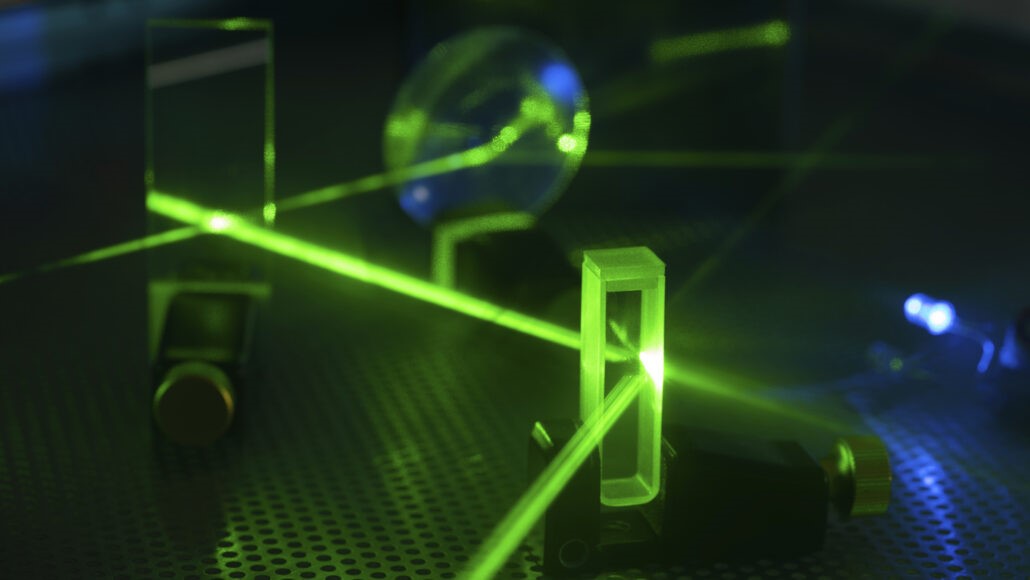Efforts to create ultrafast light pulses win 2023 physics Nobel
Such superfast blasts of laser light are powerful tools to probe electrons inside matter
Inside atoms and molecules, electrons zip around at extreme speeds. Their motions can only be captured with super short pulses of light — like camera flashes that last billionths of a billionth of a second. The 2023 Nobel Prize in physics goes to three physicists who have helped create such “attosecond” blasts of laser light.
By offering superfast snapshots of electrons, their research is changing our view of the inner workings of atoms and molecules.

Figure 1. Efforts to create ultrafast light pulses win 2023 physics Nobel
Efforts to create ultrafast light pulses win 2023 physics Nobel is shown in Figure 1.One of the winners is Anne L’Huillier, of Lund University in Sweden. Another is Pierre Agostini at Ohio State University in Columbus. The third is Ferenc Krausz. He works at the Max Planck Institute of Quantum Optics in Garching, Germany. The trio will split 11 million Swedish kronor, or about $1 million in prize money. The Royal Swedish Academy of Sciences announced the honor October 3.
Humans have long strived to measure the world around them with increasing precision, says Peter Armitage. He’s a physicist at Johns Hopkins University in Baltimore, Md. “With the advent of lasers, the timescales that you could measure became shorter and shorter,” he says. The reason? “You’re doing it with ultrafast light pulses.”
Brief bursts
Over decades, researchers have gotten better at creating near-instantaneous bursts of light. In the 1980s, L’Huillier noticed that sending infrared laser light through a gas would create light waves with a variety of wavelengths. This happens because of how the infrared light interacts with the electrons in the gas. L’Huillier’s research helped clarify that process.
The wavelengths of light that emerge from the gas are known as overtones. They’re similar to the overtones of sound waves that help give musical instruments their unique sounds. Adding up the right blends of light wave overtones can create very short pulses of light.
In 2001, Agostini led a team that used this method to produce a series of super short light pulses. Each one lasted just 250 attoseconds, or billionths of a billionth of a second. The same year, Krausz and his colleagues created single light pulses lasting just 650 attoseconds each. Today, scientists can make much shorter pulses. These last mere tens of attoseconds.
“I was personally fascinated by this field from the start,” L’Huillier said in a phone call during the award announcement. “This is why I continued with it during many, many years.” L’Huillier is only the fifth woman to receive the physics Nobel. “There are not so many women that get this prize,” she said. “So it’s very, very special.” [1]
So, how did these scientists make their contributions?
In 1987, Anne L'Huillier made a significant discovery when she directed special laser light through a particular type of gas. This light generated various patterns of light waves known as "overtones." These overtones emerged because the laser light interacted with the gas's atoms, giving some tiny electrons additional energy, which they then emitted as light. Anne L'Huillier continued her research, laying the foundation for further breakthroughs.
In 2001, Pierre Agostini created and studied a series of extremely brief bursts of light, each lasting just 250 attoseconds. Simultaneously, Ferenc Krausz was working on an experiment that allowed him to isolate a single burst of light, lasting 650 attoseconds.
But why are these super-fast electrons so important?
According to the Royal Swedish Academy of Sciences, which announced the prize in Stockholm, the experiments conducted by these three scientists have provided humanity with new tools for exploring the behaviour of electrons inside atoms and molecules.
Their research helps us comprehend how electrons behave within atoms and molecules, and this knowledge can open the door to new discoveries in electronics, disease diagnosis, and chemistry.
Although the practical applications may not be immediately apparent, scientists emphasize the importance of studying fundamental science like this, as it lays the groundwork for future advancements, even if we don't fully understand their potential right now. [2]
Reference:
- https://www.snexplores.org/article/ultrafast-light-pulses-2023-nobel-prize-physics
- https://www.hindustantimes.com/technology/nobel-physics-2023-explain-attosecond-light-waves-to-look-at-electrons-pierre-agostini-ferenc-krausz-anne-lhuillier-101696337858298.html
Cite this article:
Gokula Nandhini K (2023), Efforts to create ultrafast light pulses win 2023 physics Nobel, AnaTtechmaz, pp.753

